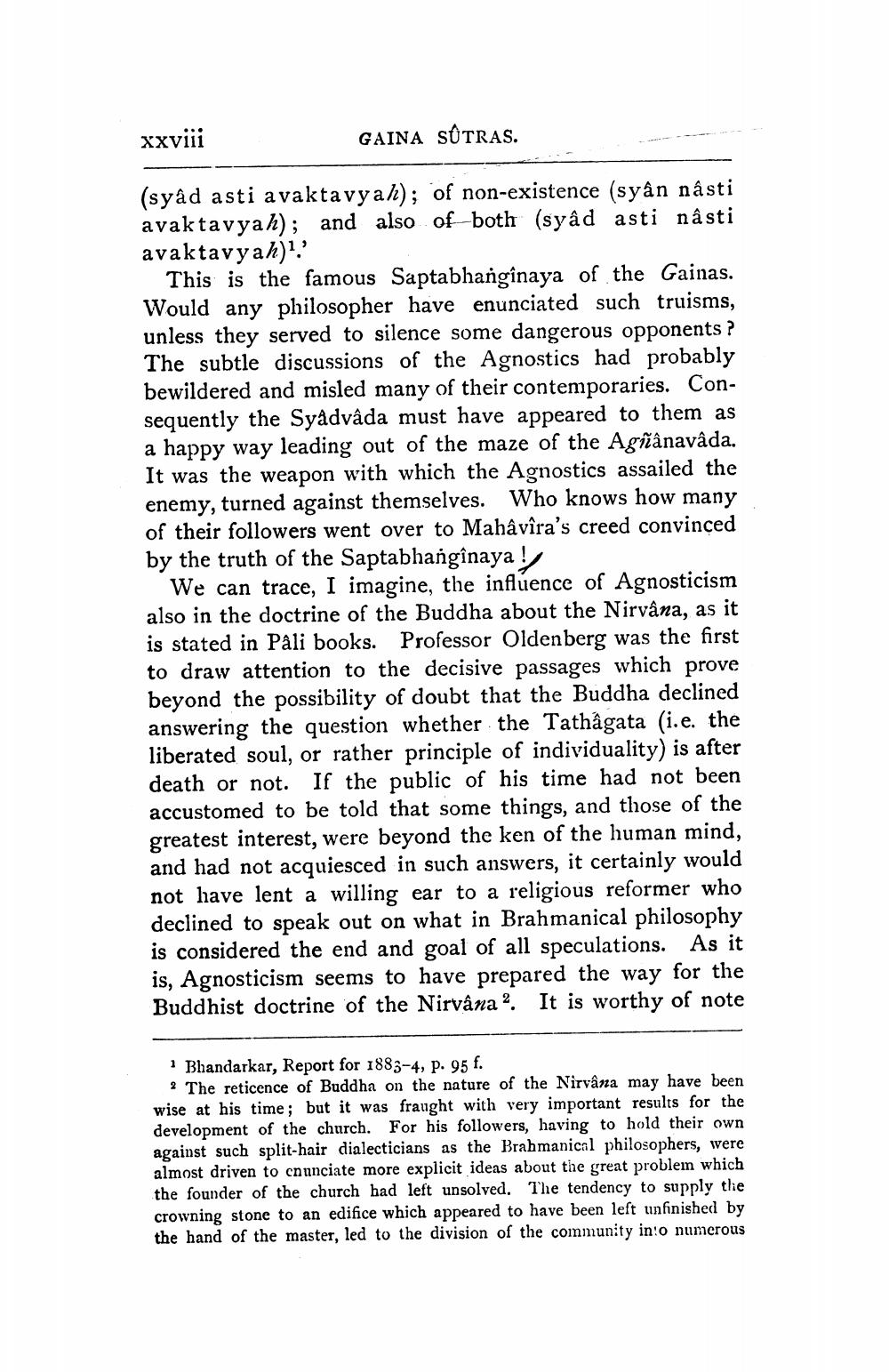________________
xxviii
(syâd asti avaktavyah); of non-existence (syân nâsti avaktavyah); and also of both (syâd asti nâsti avaktavyah)1.'
GAINA SUTRAS.
This is the famous Saptabhangînaya of the Gainas. Would any philosopher have enunciated such truisms, unless they served to silence some dangerous opponents? The subtle discussions of the Agnostics had probably bewildered and misled many of their contemporaries. Consequently the Syâdvâda must have appeared to them as a happy way leading out of the maze of the Agîânavâda. It was the weapon with which the Agnostics assailed the enemy, turned against themselves. Who knows how many of their followers went over to Mahâvîra's creed convinced by the truth of the Saptabhangînaya!
We can trace, I imagine, the influence of Agnosticism also in the doctrine of the Buddha about the Nirvâna, as it is stated in Pâli books. Professor Oldenberg was the first to draw attention to the decisive passages which prove beyond the possibility of doubt that the Buddha declined answering the question whether the Tathagata (i.e. the liberated soul, or rather principle of individuality) is after death or not. If the public of his time had not been accustomed to be told that some things, and those of the greatest interest, were beyond the ken of the human mind, and had not acquiesced in such answers, it certainly would not have lent a willing ear to a religious reformer who declined to speak out on what in Brahmanical philosophy is considered the end and goal of all speculations. As it is, Agnosticism seems to have prepared the way for the Buddhist doctrine of the Nirvâna 2. It is worthy of note
1 Bhandarkar, Report for 1883-4, p. 95 f.
2 The reticence of Buddha on the nature of the Nirvâna may have been wise at his time; but it was fraught with very important results for the development of the church. For his followers, having to hold their own against such split-hair dialecticians as the Brahmanical philosophers, were almost driven to cnunciate more explicit ideas about the great problem which the founder of the church had left unsolved. The tendency to supply the crowning stone to an edifice which appeared to have been left unfinished by the hand of the master, led to the division of the community into numerous




